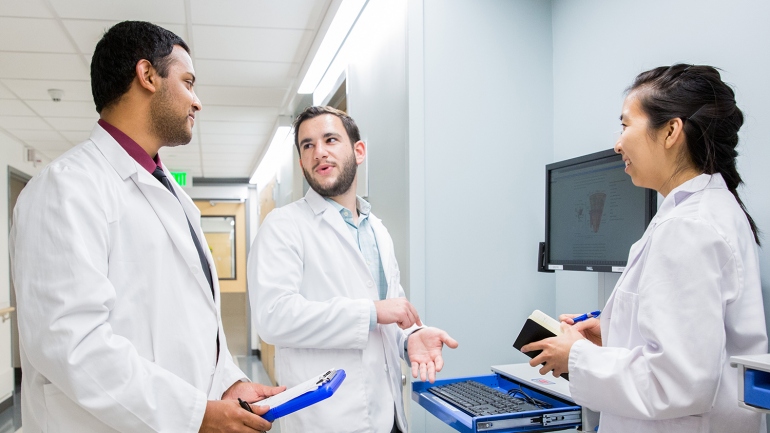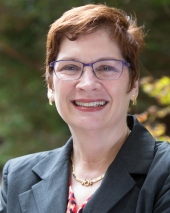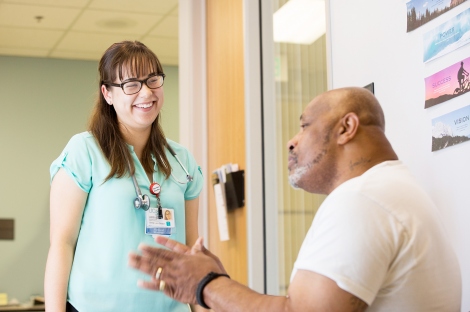School of Medicine Launches New Curriculum to Train the Doctors of the Future

Emily Serna is entering medical school at UC San Francisco confident that she wants to be a primary care physician, specializing in medically underserved areas of the country.
As she starts her education in the UCSF School of Medicine this August, she will be one of more than 150 medical students who will experience a radically updated curriculum called Bridges.
For Serna, who grew up in the Rio Grande Valley in Texas where she experienced firsthand a dearth of medical care, the new competencies of the Bridges curriculum reflect many things she cares about for her future career. Those topics include social justice issues, learning to care for entire communities rather than just individuals and entering clinical settings early in her training.

“I think that the new emphasis on social justice is going to help us to understand our patients and the struggles they might be going through, to bring up the uncomfortable conversations and figure out what we can do to change disparities,” Serna said.
The issue of health care disparities is one of a number of persistent unsolved problems plaguing current health care, including opioid addiction, new infectious epidemics such as Zika virus, and chronic health problems, such as diabetes, affecting entire communities.
“What is new in medical education is that we have a better understanding that solving these problems requires a new way of working as a health care professional, much different than what was imagined 100 years ago,” said Catherine Lucey, MD, the School of Medicine's vice dean for education.
Learning a New Way of Thinking for Health Care
That new way of working in health care, Lucey said, includes continuously asking questions and finding ways to answer them through collaboration with different types of health care professionals and scientists. Additionally, all the health care professions must be able to integrate as a functional unit in the clinical setting.
The unique UCSF training program, built from the ground up, is the medical school’s first new curriculum in 15 years. More than 300 faculty, staff and students have been working more than four years to plan and implement elements that will revamp medical education to reflect society’s current needs.
Given the interconnected nature of modern health care, other health professions at UCSF are updating their curricula as well. The School of Pharmacy is developing its own Bridges Pharmacy Curriculum, emphasizing collaborative problem-solving, continuous learning and leadership in patient-centered quality improvement. The School of Nursing has also embarked upon adding elements of health equity to its training through its Diversity in Action Committee (DIVA) and a workshop in professionalism, civility and ethics.
We have to teach future physicians how to think and we need to push them to the limits of current knowledge so they will recognize the limits and learn not just how to live, but how to thrive in a world filled with ambiguity.
“There was a time when we thought that physicians needed only medical knowledge to provide the best care for patients,” said Anna Chang, MD, a professor of geriatric medicine who has been involved in planning Bridges since its inception. “But now we know that there are safety and quality gaps in patient care that are less about a physician’s ability to recall scientific facts, and more about a person’s ability to communicate and work well with everyone on the health care team.”
The elements introduced in Bridges to develop interpersonal as well as systems improvement skills, among others, include early clinical immersion and a pursuit of a research project that will span their years of medical school.
“The 21st century requires a different kind of physician because the knowledge base is now close to infinite, and learning facts in medical school is no longer a useful approach to training,” said Gordon “Buck” Strewler, MD, professor of medicine. “We have to teach future physicians how to think and we need to push them to the limits of current knowledge so they will recognize the limits and learn not just how to live, but how to thrive in a world filled with ambiguity.”
Emphasis in Bridges will be on developing clinical skills to continuously improve care, built upon the underlying concept that medical knowledge is constantly changing, and that UCSF graduates should be ready to become tomorrow’s leaders in answering the unknown answers and unsolved problems.
Giving Early Students Contributory Roles on Clinical Teams
Much of a physician’s real-world clinical skills have been traditionally learned not in medical school, but on the job in residency and in practice, Chang said. Now, students begin to apply clinical skills from the outset.
“Medical education has a responsibility to help health care improve today, not just to wait for the next generation of students to graduate to help,” Lucey said.
Bridges students will learn a new set of cutting-edge teamwork and system skills, said Chang, that will allow them to identify what is working well and what can be improved in health care systems, and to participate in developing new ways to improve patient care.

In projects designed to explore some of the logistic requirements for clinical immersion of first-year medical students, early learners delivered substantive results and learned lifelong career lessons.
Third-year student Shire Beach was immersed in a busy rheumatology clinic team in her first year. She and fellow students noted a high no-show rate and implemented some changes in communicating with patients that dropped that rate significantly.
“I found that it was important not just to look at the medicine of what is going on in the clinic, but also the systems for delivering this care to patients,” she said. “Patients need to show up to get the health care they need.”
In a pilot experience involving hospital medication reconciliation, first-year students identified errors, many of which could have led to adverse drug events and also barriers to management, such as patients not being able to afford their medications. “The students were able to identify a lot of really significant issues that would have not been known otherwise, because they had the time to spend with the patients,” said Associate Professor Stephanie Rennke, MD, clinical microsystem site director for UCSF Health.
Second-year student Philip Kingsford, who worked with pharmacy students in the medication reconciliation pilot last year, said it gave him an appreciation of working with an interprofessional team and gave him experience with patients he will carry forward for the rest of his career. “I got some pretty valuable insight from them on what it is like to be a patient and will always try to keep their perspective in mind,” he said.
Serna said she is looking forward to early clinical experience. “UCSF prides itself on producing physicians who are socially aware, able to empathize and sympathize, and who have good doctor-patient interactions,” she said. “The earlier we get exposed to those skills, the quicker it becomes second nature.”
Learn more about the launch of the Bridges curriculum this fall »